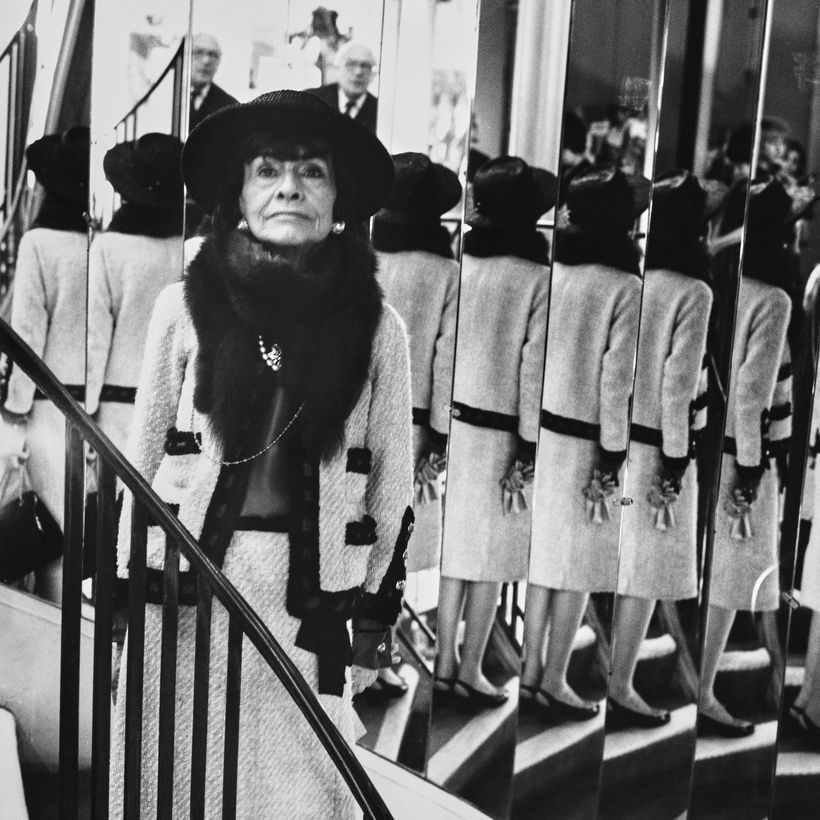More than half a century after her death, Gabrielle “Coco” Chanel is still fashion’s most influential designer. The little black dress, which she turned from mourning garb to everyday wear in the mid-1920s, is, as Vogue dubbed it then, “the Ford of fashion.” Her tweed bouclé suit, with its boxy deconstructed jacket and pencil skirt, designed in the 1950s in response to Christian Dior’s New Look hourglass, remains the chic uniform for women, as does its midcentury mate, the quilted 2.55 handbag. “I hear the briefs of brands that declare that they want to create a ‘classic,’ like No. 5,” Chanel’s former chief perfumer Jacques Polge told me when I was working on my book Deluxe: How Luxury Lost Its Luster. “It’s a mythical perfume.”
And yet, for all her influence, Chanel remains an enigma—one that more than 170 biographies, dozens of museum shows, and countless films have attempted to decipher, with varying success. Add now to that canon Coco Chanel: Unbuttoned, an Arena documentary airing on BBC Two on September 15, which argues that Chanel was “the first ever influencer,” and “Gabrielle Chanel. Fashion Manifesto,” the first U.K. exhibition dedicated to the trailblazing couturière’s modernist work, opening at London’s Victoria and Albert Museum on September 16.

This monumental retrospective of more than 200 looks, as well as accessories, jewelry, and perfumes, builds amply upon an earlier exhibition that took place at the Palais Galliera, in Paris, during the pandemic, and comes at Chanel from a feminist viewpoint, examining how she liberated and empowered women through dress, without sacrificing femininity or elegance. It is also the first to directly address her activities during World War II.
Gabrielle Chanel was born in the French military town of Saumur to itinerant peddlers in 1883, one of three daughters. When she was 11, her mother died and her father ran off. She was raised in a convent orphanage and a Catholic boarding school, where the nuns taught her how to sew. Experts believe that Chanel’s signature stark lines and neutral tones are rooted in the uniforms of her youth.

From there, Chanel made her way north: first to the estate of a playboy boyfriend, the textile heir Étienne Balsan, for whom she was a courtesan; then to Paris, where, in 1910, her polo-playing beau Arthur “Boy” Capel financed her hat shop on the Rue Cambon. (The Chanel company now occupies much of the street.) One of the earliest pieces in the V&A exhibition comes from this era—a Marinière blouse from 1916. Draped and slouchy, the look marked a radical shift from the constricting Edwardian silhouettes of the time. Another is a pliable straw hat from 1917.
In 1919, Chanel met the respected perfumer Ernest Beaux through another lover, the Grand Duke Dmitri Pavlovich Romanov. As the V&A show maps out, Chanel, with Beaux, created No. 5, a spicy scent constructed from roughly 80 ingredients and—in another first—enriched with aldehydes, organic compounds that behave like alcohol.

Throughout much of the 1920s and early 1930s, Chanel swanned through France and Britain on the arm of the second Duke of Westminster, a close friend of Winston Churchill’s. It is here, naturally, that the V&A show excels, celebrating Chanel’s Anglophilia—she had a boutique in Mayfair and worked with mills in Scotland and England to develop tweeds for her suits—with a strong selection of pieces from the museum’s archives.
But it directly leads to the most problematic chapter of Chanel’s life: World War II, when she shuttered her couture house and took up with a handsome Nazi spy, Hans Günther von Dincklage, bunking with him at the Hôtel Ritz Paris. The V&A curator Oriole Cullen, with the help of the Chanel biographer Justine Picardie, addresses this period in the exhibition with rigor, in an attempt to correct the record as put forth in Sleeping with the Enemy, a 2011 book by Hal Vaughan, a former U.S. foreign-service officer turned journalist based in Paris, who believed that Chanel was an agent for the Nazis.

Not so, says Picardie. While working on her most recent book, Miss Dior, about Christian Dior’s sister Catherine, who was a member of the French Resistance, Picardie discovered documentation that Chanel was also an active member and was part of a network that provided vital intelligence for the British and Allied forces in London. Picardie includes this information in a new edition of her biography, Coco Chanel: The Legend and the Life, to be published by HarperCollins later this month. Though the exhibition does not linger over this era—not surprising, given that the Chanel brand, a global powerhouse that last year rang up $17.2 billion in sales, is a sponsor—it does acknowledge the designer’s actions then in a way that no other show has to date.
Chanel made a grand return to Paris fashion in 1954, at the age of 71. The reboot of the house was underwritten by the Wertheimer family, the original backers of Les Parfums Chanel in the 1920s—Chanel sold them everything, in return for having them cover all of her expenses—and she carried on running the fashion house until she died, at the Ritz in 1971, at 87. “Nothing is straightforward with Chanel,” Picardie says. “But that’s why she forever holds our interest.”
“Gabrielle Chanel. Fashion Manifesto” will run at the Victoria and Albert Museum, in London, beginning September 16
Check out AIR MAIL’s Arts Intel Report, our newly revamped research tool for what to do and where and when to do it
Dana Thomas is a fashion journalist and the author of several books, including Gods and Kings: The Rise and Fall of Alexander McQueen and John Galliano and Fashionopolis: Why What We Wear Matters

